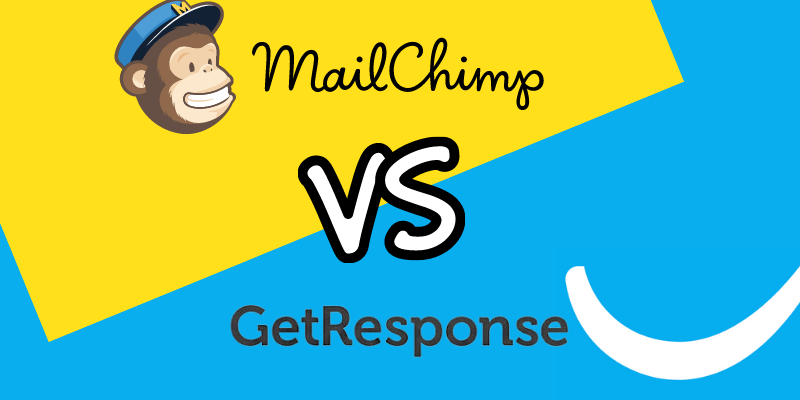
MailChimp and GetResponse are two different email marketing tools with a lot of features. MailChimp is a common email marketing tool that all are familiar with. It is an email marketing tool for all types of businesses. It has a free plan with limited features and also it is easy to set up. So, it is a good tool for beginners also. GetResponse is an all-in-one email marketing tool that includes email marketing, SMS marketing, website builder, marketing automation, etc. GetResponse is best for Solopreneurs, eCommerce Businesses, and Small & Medium businesses. Here I compared MailChimp Vs GetResponse. If you are looking for a better marketing tool for your business, then this comparison is for you.
Quick Summary
MailChimp
- $0 – $299/month
- Easy to set up
- Multivariate A/B testing (Available only for the $299/month plan)
- Advanced Segmentation ($299)
- Better analytics & reporting
- Time optimization & behavioral targeting
- Phone support only for the $299 plan
- No Refund
- Free Version with limited features
GetResponse
- $0 – $98/month
- Better templates
- Better Anti-spam policy
- Better landing pages.
- Great visual automation workflow.
- In-built Live Chat feature
- Perfect timing & Time travel features.
- Split test up to 5 versions
- Affordable & Free version with basic features.
What is MailChimp?
MailChimp is a general email marketing tool. More than 90% of Mailchimp customers are free users. Its free plan is popular and beginner-friendly. It has so many features. But most of them are not available in the free plan & extremely priced, only suitable for large-scale corporate businesses. At the same time, its free plan is popular among students as a learning point. The highest number of users are beginners who are just started to learn. That’s why Mailchimp contributes the highest number of spam emails. Mailchimp is good in its features and ease of use.
Who uses: Students, Large corporate businesses, Small businesses, Universities, Local clubs, etc
What is GetResponse?
GetResponse is an all-in-one email marketing platform where you can send stunning emails to your customers. Using GetResponse, you can grow your audience, through Email Marketing, Landing pages, Website Builders, Webinars, and Marketing automation. It also has so many features such as Autoresponders, Email Analytics, Transactional emails, etc. It has advanced marketing automation. We can call GetResponse an Omni channel marketing tool. Because it has also SMS marketing.
Who uses?: Solopreneurs, eCommerce Businesses, Small & Medium businesses.
FAQs
Main Differences
- GetResponse has in-built webinar features like Live Webinars, On-demand webinars, Paid Webinars, Webinar funnels, etc. MailChimp does not have an in-built webinar. You have to integrate with third-party apps for webinars.
- GetResponse has social ad creation option, whereas MailChimp does not have that feature. It has Social posting and social post scheduling only.
- MailChimp has an in-built CRM for small businesses. GetResponse does not have an in-built CRM.
- GetResponse has SMS marketing. But MailChimp does not have SMS marketing. MailChimp needs Simple Texting Integration for doing that.
- MailChimp has a feature called address finder, where Mailchimp finds addresses from the email. You can send postcards to customers’ mailboxes. GetResponse doesn’t have that feature.
- MailChimp has only around 10 templates for landing pages whereas GetResponse has 190+ templates.
- GetResponse has a Live Chat feature, whereas MailChimp does not. MailChimp has to integrate with third-party apps for Live Chat.
Interest over time of MailChimp Vs GetResponse according to Google Trends is given below.
In-Depth Review
Spoiler Alert!
| Features | Winner | MailChimp | GetResponse |
|---|---|---|---|
| Contact Management | Tie | ||
| Templates & Design | GetResponse | ||
| Campaigns & Email Builder | MailChimp | ||
| Spam Check | GetResponse | ||
| Split Test | GetResponse | ||
| Automation Workflow | GetResponse | ||
| Analytics & Report | MailChimp | ||
| Landing Pages | GetResponse | ||
| Website Builder | GetResponse | ||
| Pricing | GetResponse | ||
| Integration | GetResponse | ||
| Customer Support | GetResponse | ||
| Live Chat | GetResponse | ||
| Auto-responder | GetResponse | ||
| Winner | GetResponse |  |  |
Let’s compare some features of Mailchimp Vs GetResponse in depth.
1. Contact Management
>> MailChimp
Importing contacts in MailChimp is easy. You can create a mailing list in Mailchimp using several ways. You can add subscribers manually, you can upload a CSV file or TXT file, and you can copy and paste the contacts from the Spreadsheet. MailChimp allows you to create multiple lists. You can separate one contact list from one another and you can use these multiple contacts for different purposes. You can also create segments for these contact lists. You can create simple or complex segments. Mailchimp’s pricing is based on the number of customer lists. You can add up to 2000 contacts to your free plan.

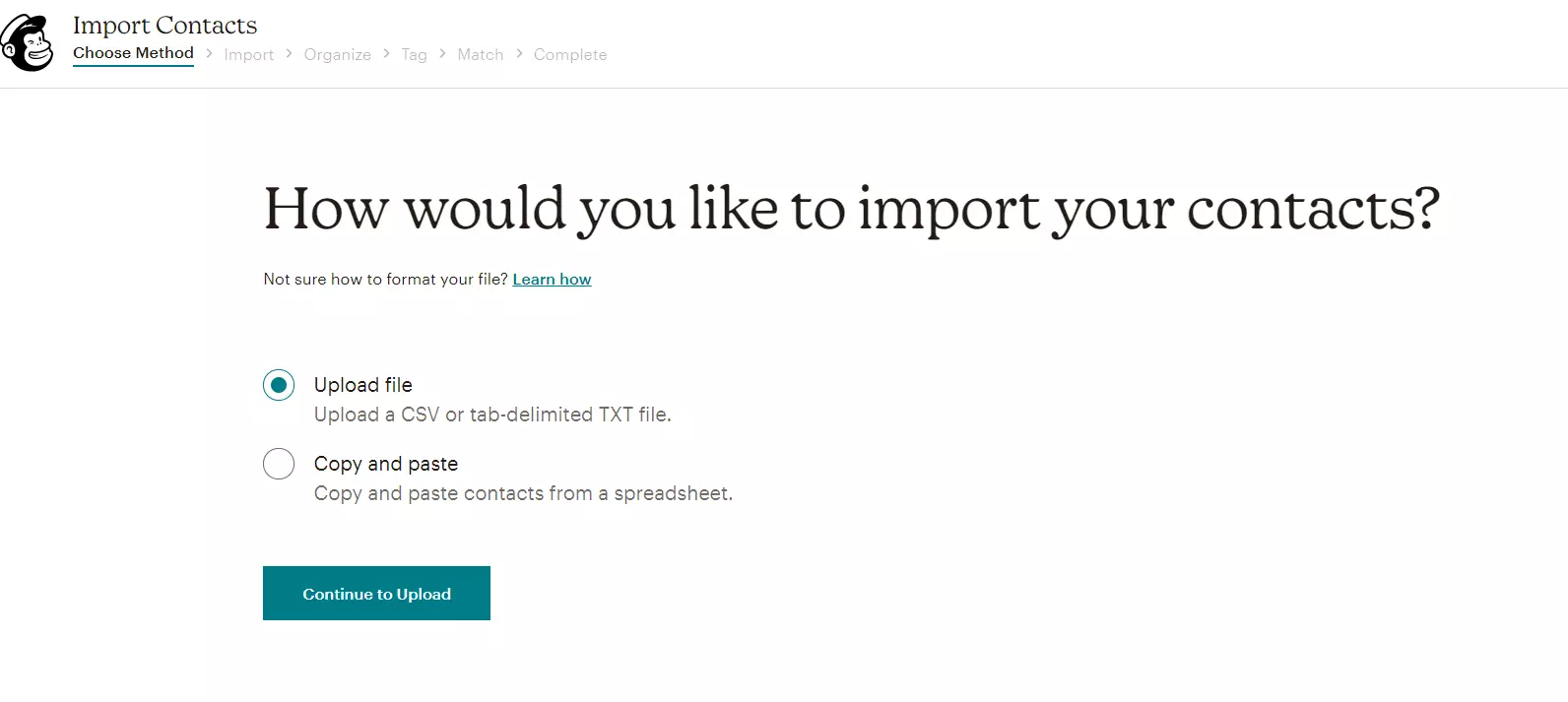
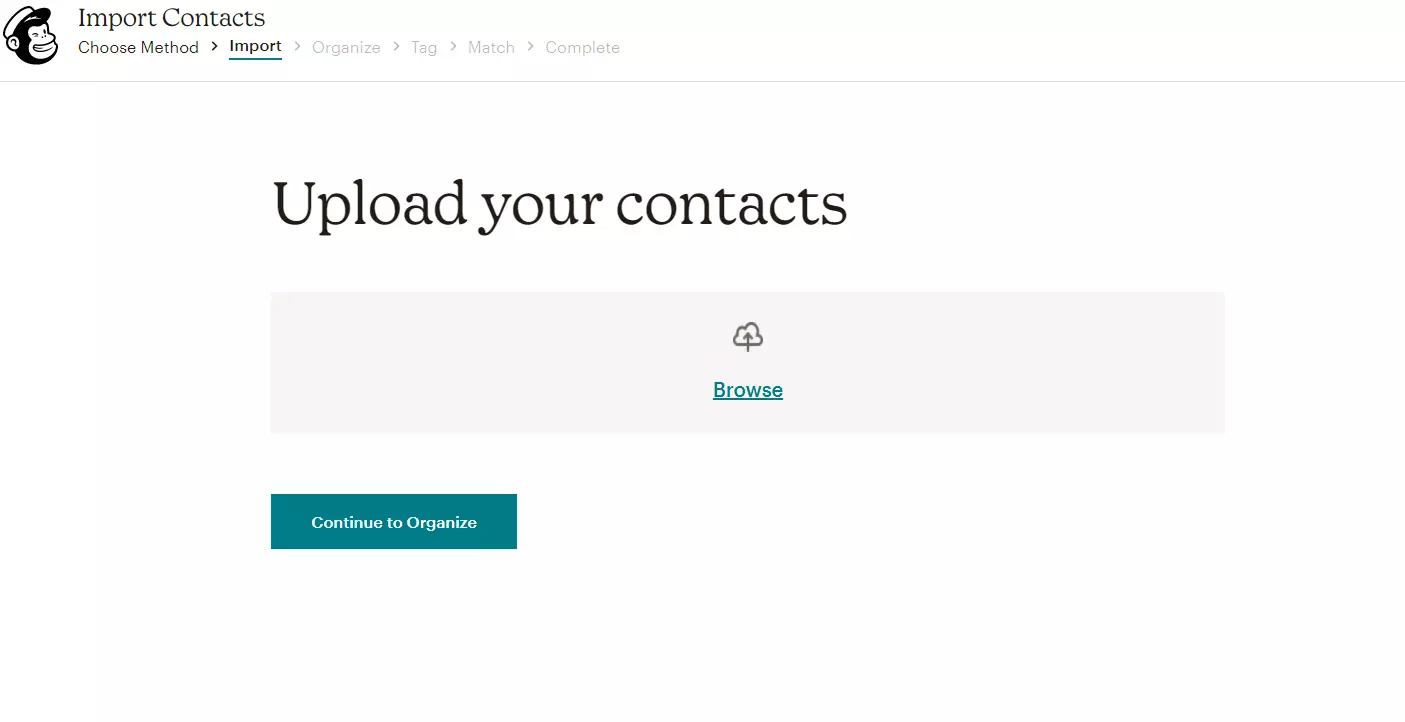
You can import contacts from other services like Zapier, Salesforce, WooCommerce, Shopify, Squarespace, etc.
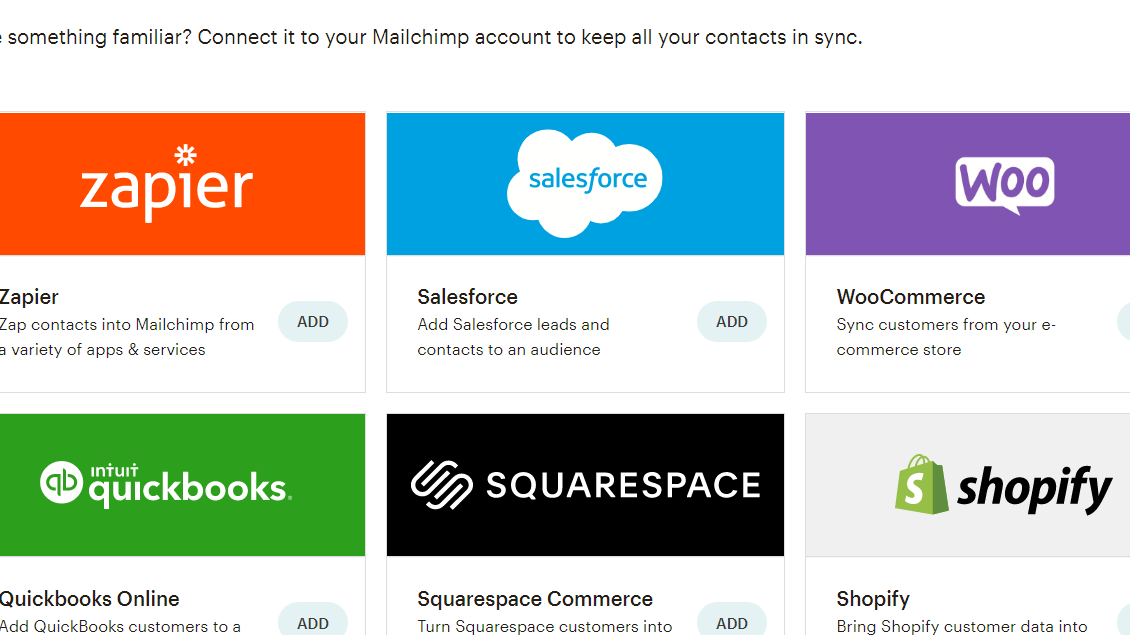
MailChimp also has customer segmentation. There are so many segmentation options available. You can segment customers based on location, birthday, signup source, automation activity, etc.
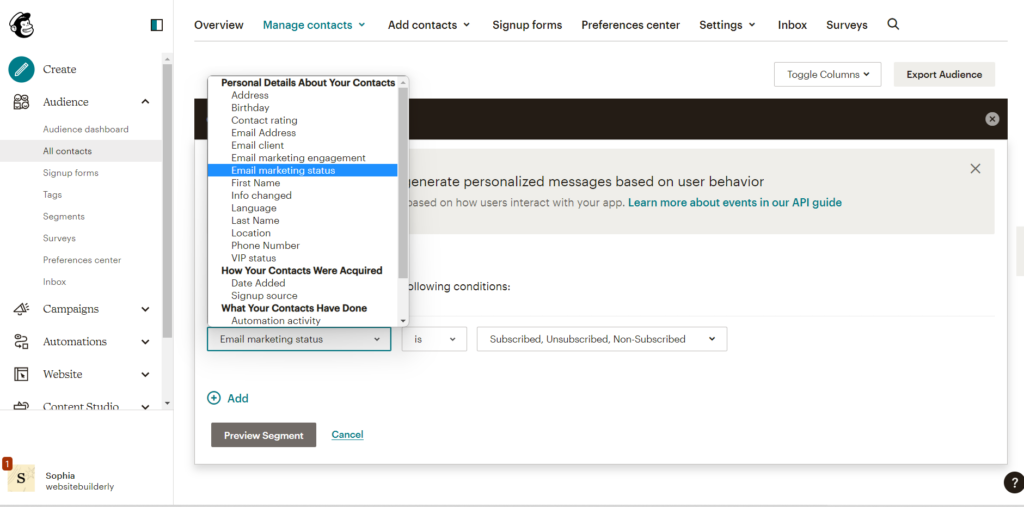
>> GetResponse
You can easily add contacts in GetResponse. After signing up, there will be a “Contacts” option in the above right corner. Then you can click “Add Contact”. You can add the contact in GetResponse in several ways. You can add one by one manually by entering the name, email address, etc. You can upload a CSV file, you can copy and paste a list of contacts, or else, can import contacts.

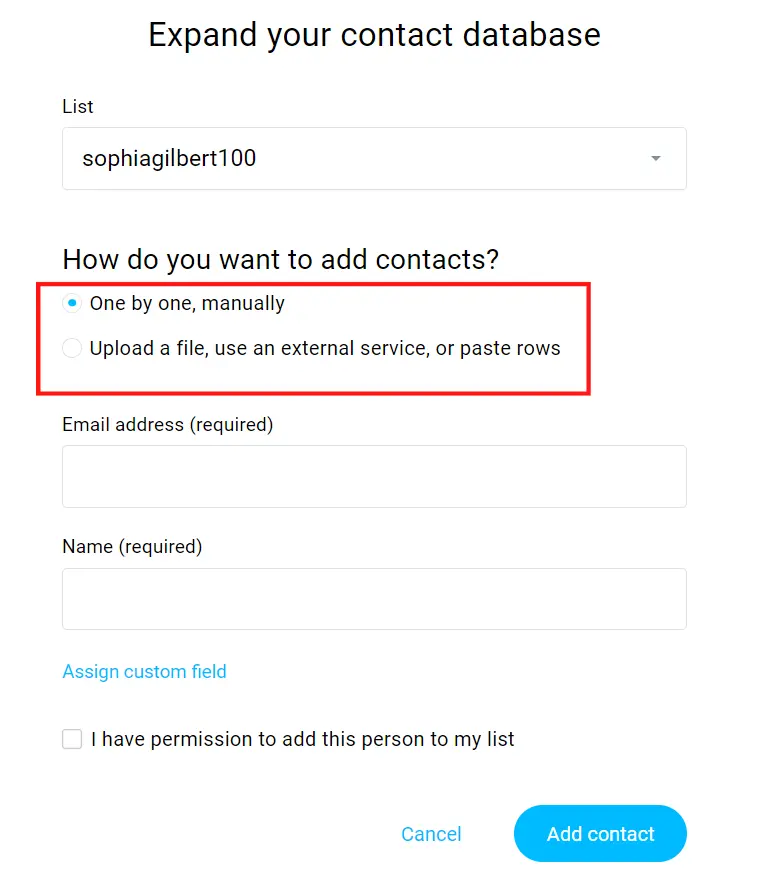
You can import contacts by connecting to other services. The services include Zendesk, Highrise, Magento, Salesforce, Google Docs, Google Contacts, etc. You can also migrate from other email marketing tools like ActiveCampaign, MailChimp, AWeber, and Constant Contact. You can add those contacts to an existing list or you can create a new list.
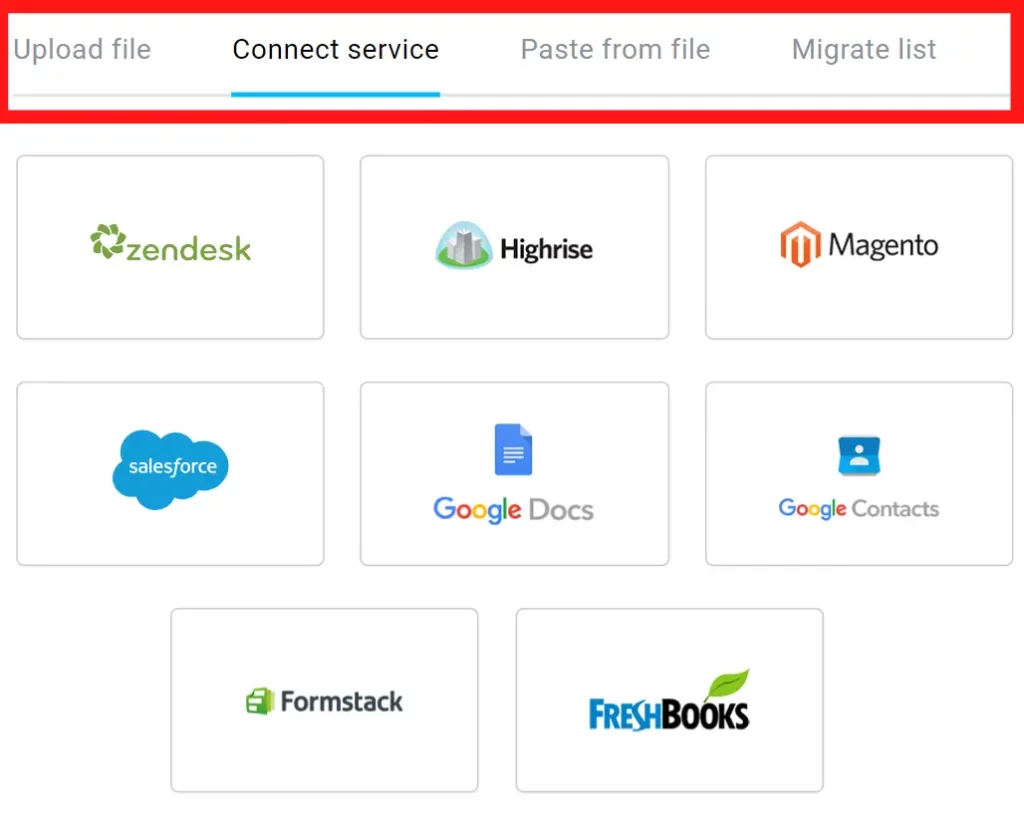
After adding the contacts, you can segment your customers into different categories. They include Contact details, Contact Actions, Geolocation, Scoring, Event, etc.
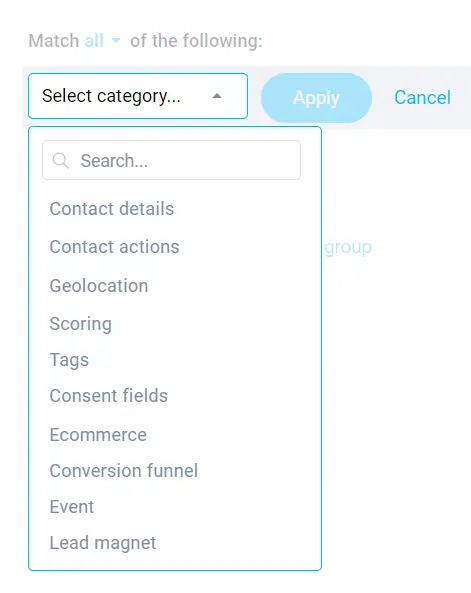
Key Take-Aways: Contact management in both MailChimp and GetResponse are similar. They both can add contacts by uploading files, copy-paste, manually entering, and by other third-party services. And also, they both have good customer segmentation features.
Winner of Contact Management: Tie
MailChimp: 1-1 : GetResponse
2. Templates & Design
>> MailChimp
On the other hand, MailChimp is a design-centric email marketing tool. Mailchimp provides around 100+ templates with various designs. We can use them for holiday mails, newsletters, promotions, etc. Also, we can create our templates. For that, they are providing around 15 blank templates. But most of the templates are outdated and non-usable.
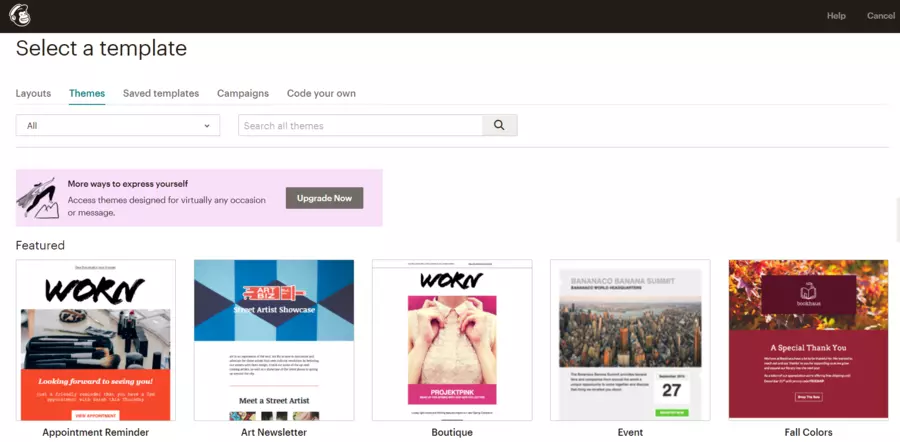
>> GetResponse
GetResponse has around 160+ templates good-looking, simple, and stunning templates. These templates are categorized into Celebrate, Educate, Promote, sell, welcome, etc. You can create your own templates from the blank templates, and also, you can create templates from the HTML editor.
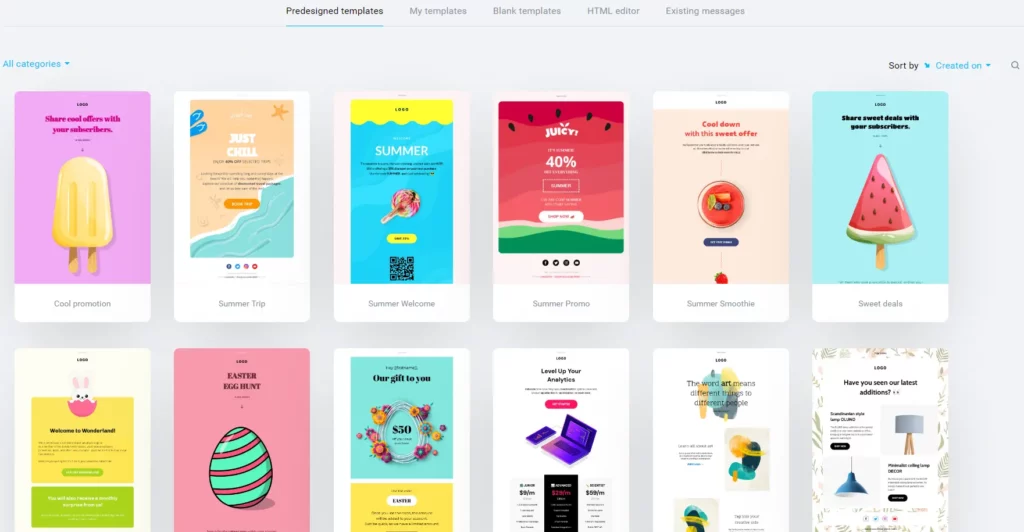
Key Take-Aways: Templates designs are far better in GetResponse when compared to MailChimp. There are so many stunning templates available in GetResponse. Most of the templates in MailChimp are outdated and non-usable. Also, more templates are available in GetResponse.
Winner of Templates & Design: GetResponse
MailChimp: 1-2 : GetResponse
3. Campaigns & Email Builder
>> MailChimp
Mailchimp’s email editor is user-friendly and easy to navigate. All the options are present on the right side itself. You can simply drag and drop the blocks you want. You have plenty of features in the Mailchimp editor. You can also add videos from your gallery or you can give the youtube link. For the free version, you can have all the features in the Mailchimp email editor. But to create Dynamic content, you need to upgrade the plan to $17 /month.
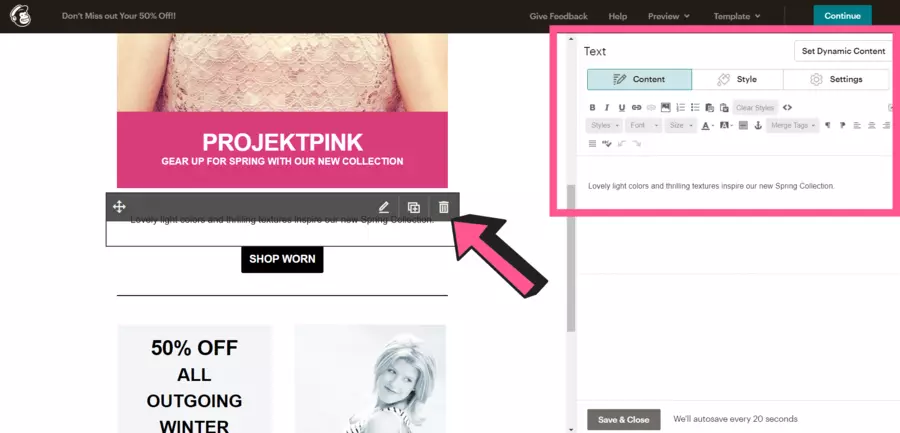
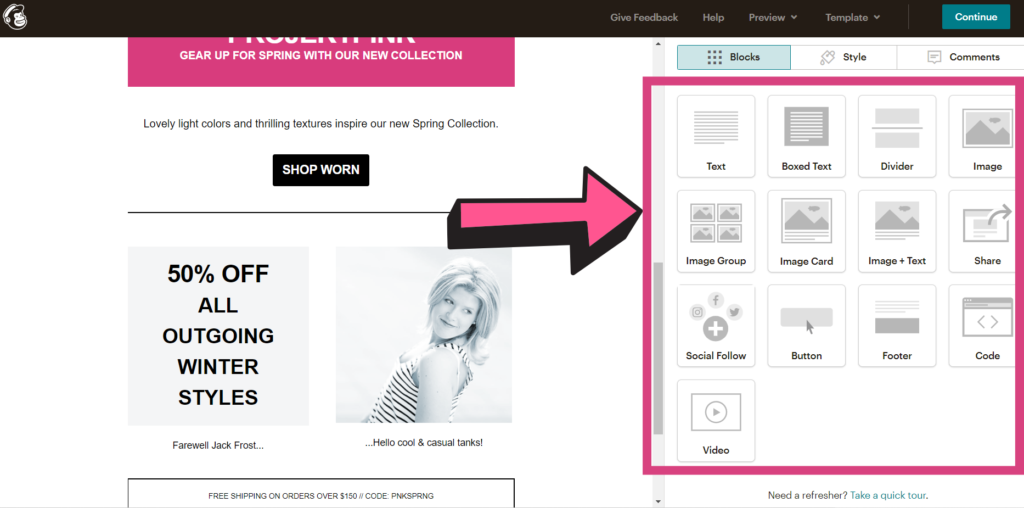
>> GetResponse
You can easily create campaigns in GetResponse. You just have to click the “email marketing” option from the right top corner. There will be a “Crete Newsletter” option. After clicking that, you will enter to next page. From there, you can add the Message name, From address, Subject line, Recipients, and email design, you can also enable click tracking, eCommerce tracking, etc. from there. You can also enable sharing button (to Facebook & Twitter), and you can schedule time for sending messages (Send immediately, Schedule for later).
There is one unique option is available in GetResponse. That is Perfect timing. Perfect timing means They will look at when each recipient opened your messages in the past and deliver your email when they’re most likely to open it. If you don’t want any delay in message sending, you can disable this option.
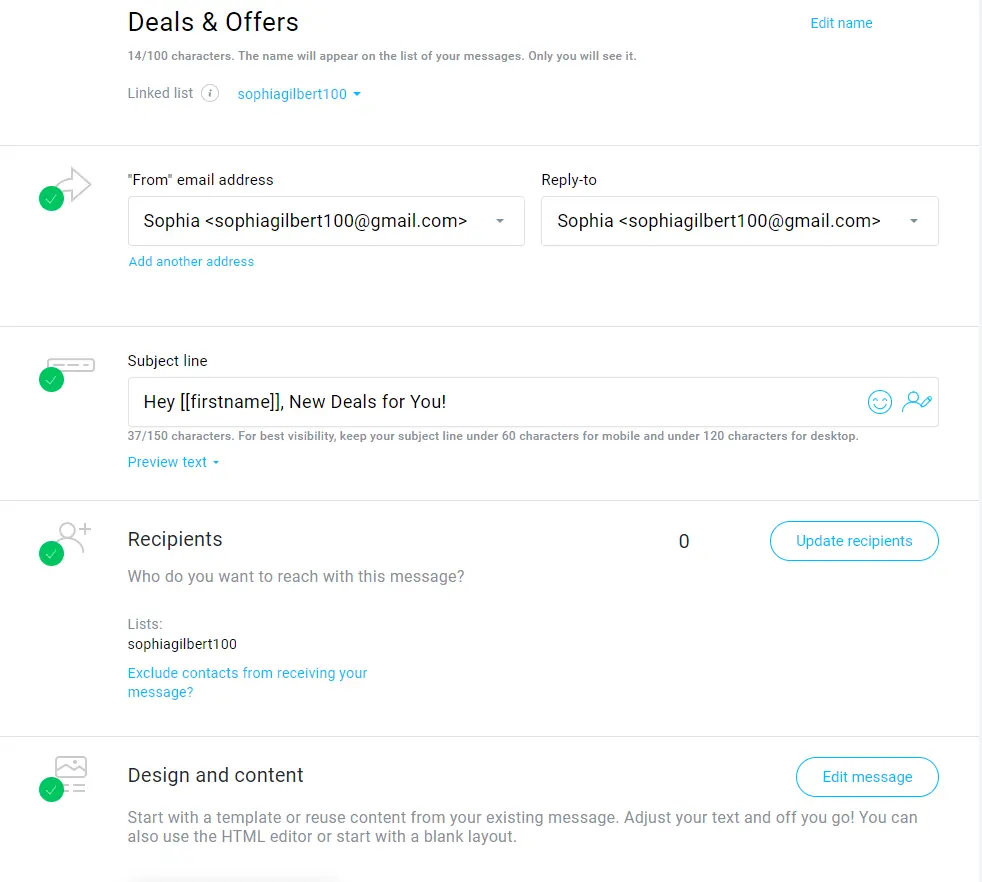
Email Builder of GetResponse is very simple. You can see, that four options will be available. They are Sections, Basic Blocks, E-commerce, and my block. Section means you can add column sections like 1 column, 2 columns, etc. up to 6 columns. Basic blocks include elements like images, text, buttons, Video, spacer, divider, Social, and custom HTML. Ecommerce includes Product box recommended products and promo codes. You can connect to your store and add products. Next is “My blocks”. That is, You can save your content block and use it in another campaign.
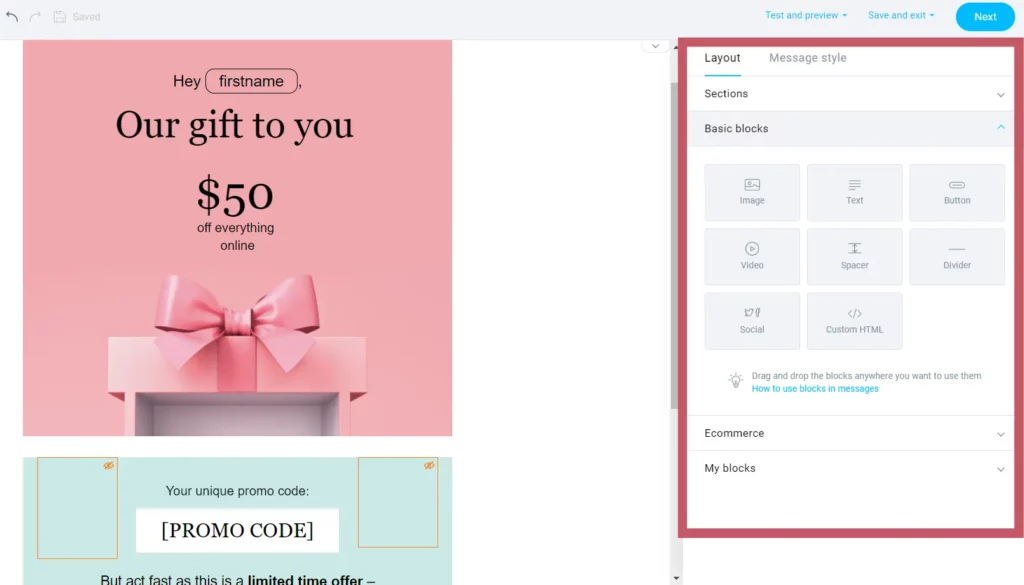
You can also set up the overall message style. You can change the width, background color, header style, footer style, etc. from there. The text editor is also simple. You can change alignment, styles like boldness, italics, underline, change font style and size, add links, etc. You can also change background color and padding. You can also hide some contents or elements from mobile devices. After you have done editing, you can preview it from the desktop and mobile devices.

After you created your campaign, you can spam check your email. It will say, your email is good or bad, and whether will it go to the spam folder or not. They will also give suggestions to improve your email. It’s cool.
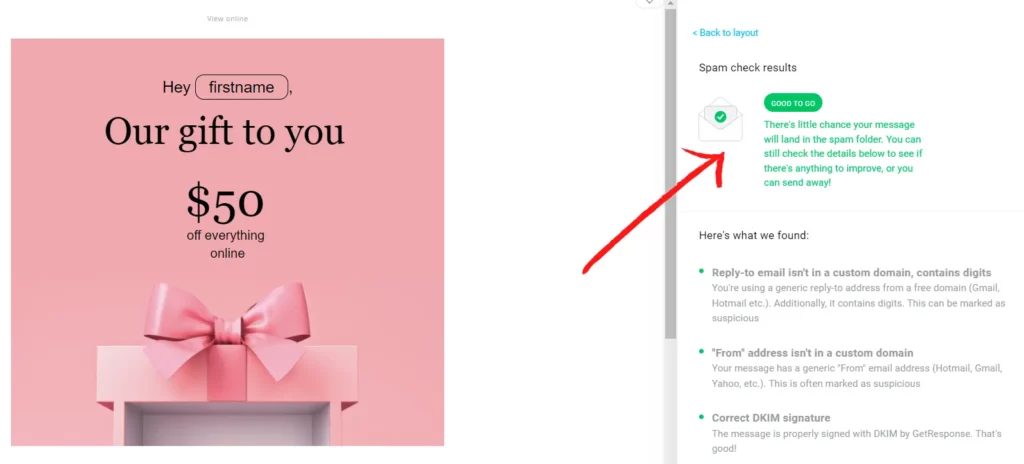
Key Take-Aways: It is easy to create campaigns in both MailChimp and GetResponse. Both MailChimp and GetResponse have drag-and-drop editors. But drag and drop elements are more in MailChimp when compared to GetResponse. But the spam check feature is better in GetResponse.
Winner of Campaigns & Email Builder: MailChimp
MailChimp: 2-2 : GetResponse
4. Split Testing
>> MailChimp
MailChimp has two types of testing. A/B Testing and Multivariate Testing Testing. Multivariate Testing is just an evolution of A/B testing that contains 8 variations instead of the two variations that you get in A/B testing. It is only available for a $299 /month plan.
You can test different versions of the subject line, from name, Content, and Send time. After you select the version, you can split the test among your recipients.

>> GetResponse
GetResponse split testing is pretty cool. You can test the Subject line and Content. You can test up to 5 different versions of the subject line for one message. You can personalize them and see which one works better for you.
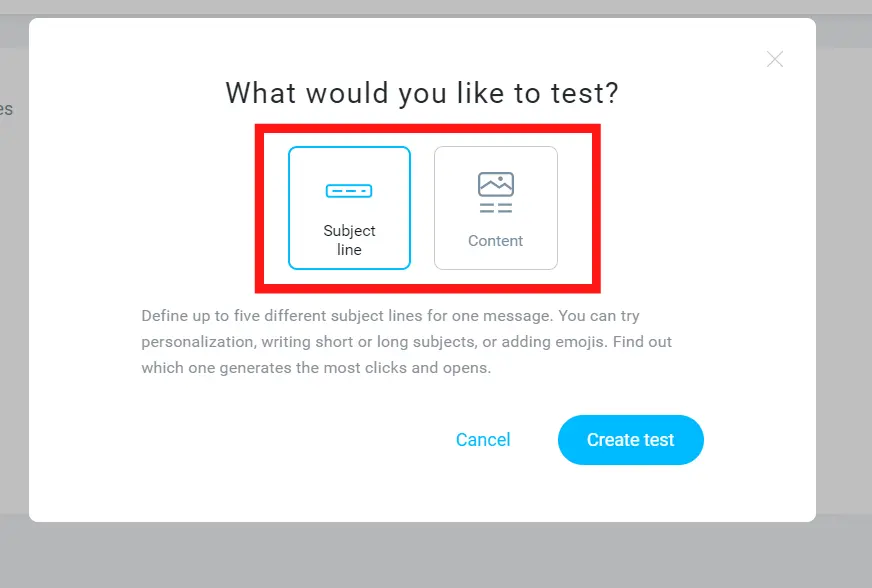
You can configure your A/B test by the slider. Using the slider, you can set the size of the test group. You can set up the winning test automatically.
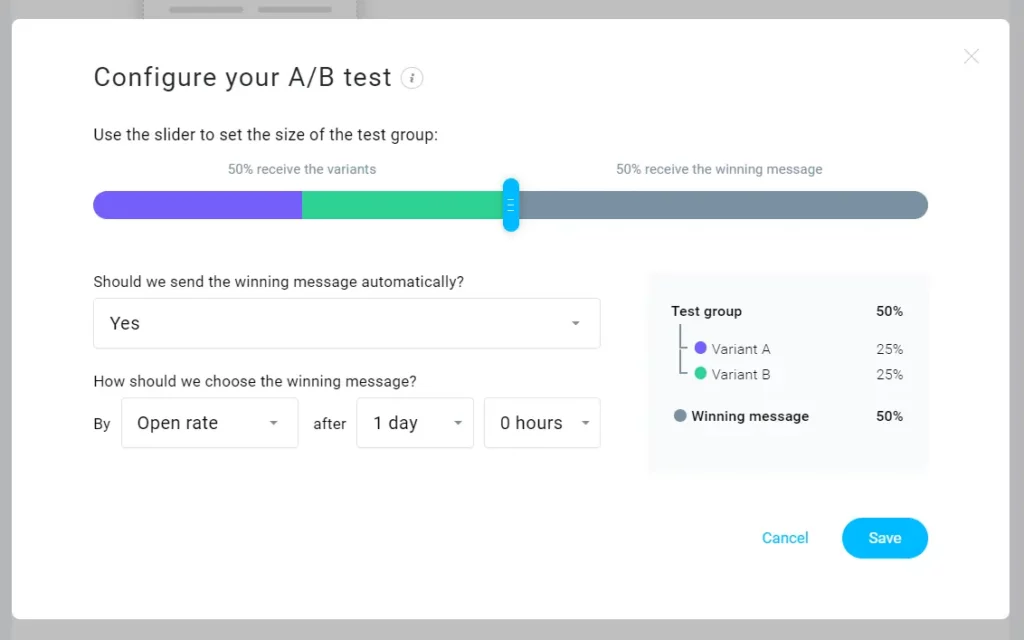
Key Take-Aways: The split test of GetResponse is better when compared to MailChimp. You can test only 2 variations in MailChimp. But in GetResponse, you can test up to 5 variations of the subject line, content, design, etc. MailChimp has the multivariate option that you can test up to 8 versions. But it is available only on the $299 plan.
Winner of Split Test: GetResponse
MailChimp: 2-3 : GetResponse
5. Automation Workflow
>> MailChimp
In Mailchimp, the $11 and the higher plan includes automation workflow. You can create only 1 automation using the free plan. There are about 25 automation workflow triggers based on the various customer activity. You can also visualize the journey of the customer in a simple way. If you want advanced automation features, you need to upgrade to $11 or to other higher plans. Mailchimp has also a multi-step workflow based on customer activity. You can create complex workflows using the $17 plan. You can create a customer journey and also you can send transactional emails on Mailchimp.
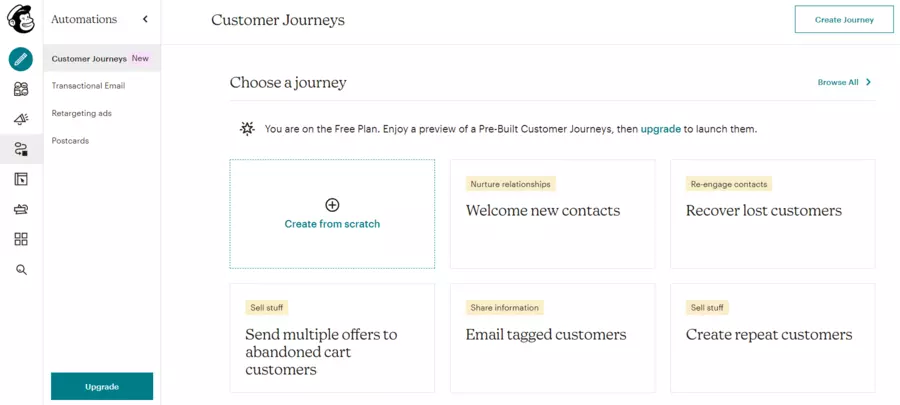
>> GetResponse
GetResponse marketing automation is also advanced. There are so many templates available for automation that you can select from. They include Welcome, Lead qualifying, Engagement and retention, Post-purchase, abandoned cart, etc. You can also build from Scratch.
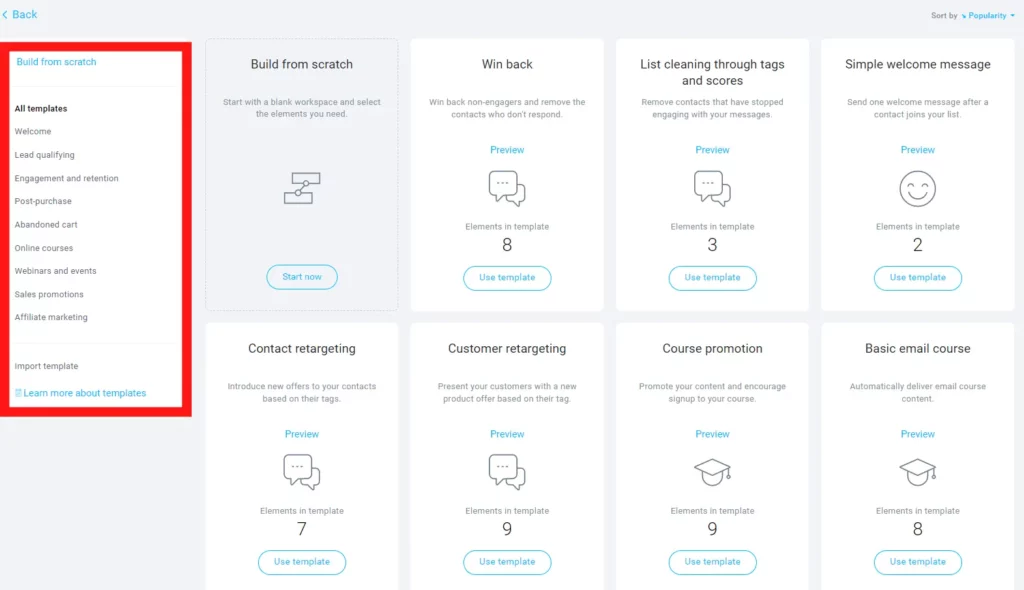
You can create complex automation in GetResponse also. There are so many pre-built automation available. If you are creating from scratch, there will be several options available like basic, tagging & scoring, and eCommerce. They include subscribing, clicking a link, opening a message, having a special occasion, abandoning the cart, etc. After selecting one option, and if you are a beginner, you can watch tutorials or you can do trials. By adding conditions and actions, you can create a simple to complex automation workflow.
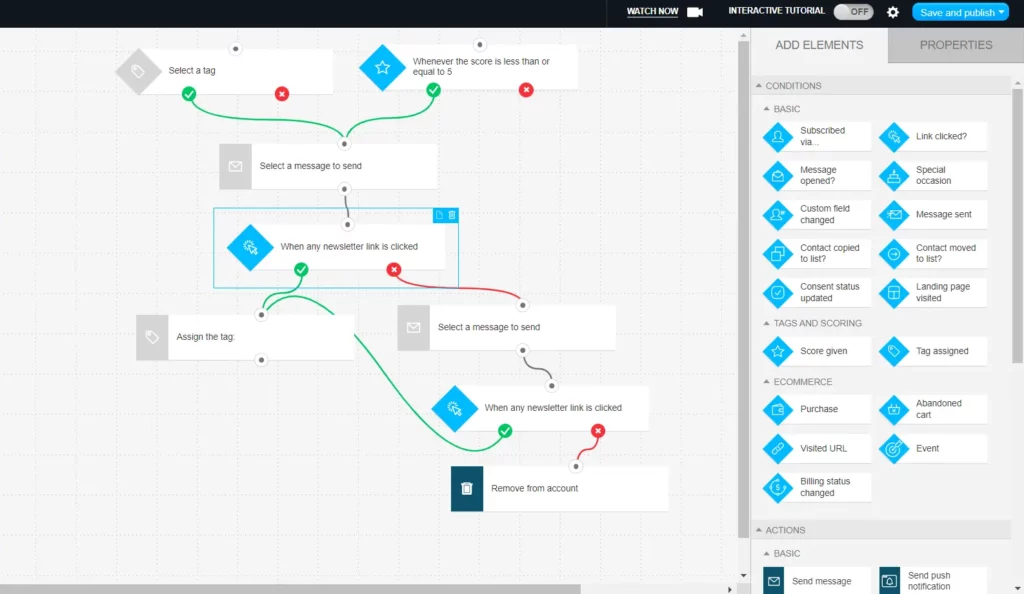
There are so many actions and conditions available in GetResponse. The Conditions are categorized into basic, tagging & scoring, and eCommerce. Basic conditions include subscribed via, link clicked, message opened, special occasion, message sent, etc. Tagging and scoring include score given and tag assigned. Ecommerce includes purchases, abandoned carts, visited URLs, Events, etc.
Actions are also categorized into Basic and Tags & Scoring. Basic includes Sending a message, Sending push notification, custom field, copying to list, moving to list, Walt, removing a contact, etc. Tags & scoring include tag and score. There are so many filters also included like range, amount, dynamic segment, lists, unique contacts, splitter, etc.
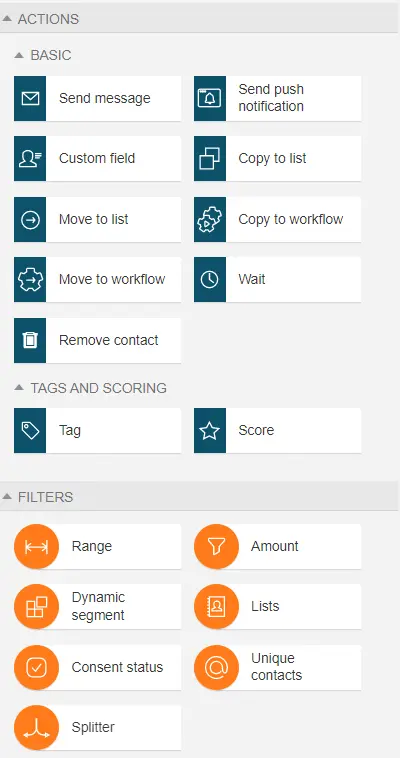
Key Take-Aways: Automation workflow is better in GetResponse when compared MailChimp. GetResponse has a lot of actions and triggers. And also, you can create a complex automation workflow using GetResponse.
Winner of Automation workflow: GetResponse
MailChimp: 2-4 : GetResponse
6. Analytics & Report
>> MailChimp
You will get better analytics and reports using Mailchimp when compared to GetResponse. You will get an open rate, click rate, bounced rate, unsubscribe rate, etc. They are also providing a performance chat of your campaign. You will get a campaign benchmark also. By this, you can compare your campaign performance with your competitors. You will get even better analytics and reports with higher plans. You will get comparative reporting using the $299 plan.
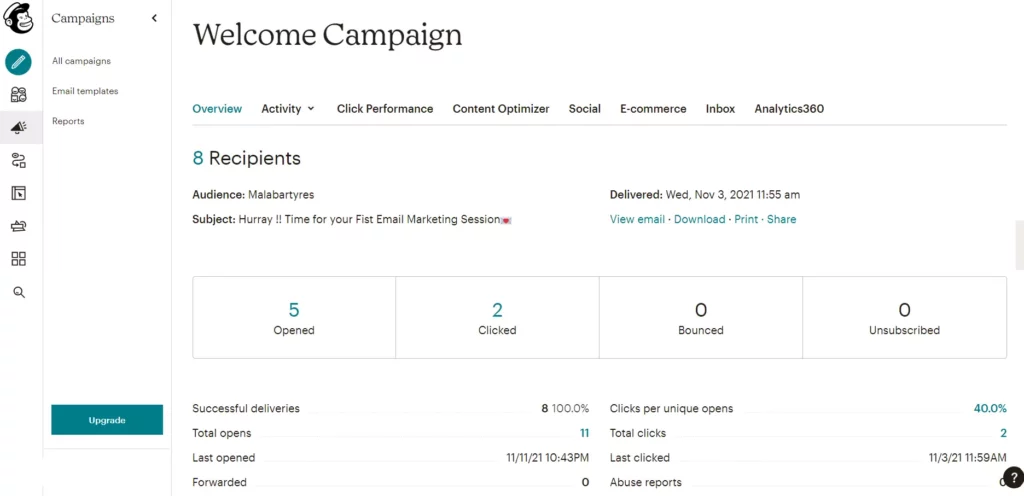
>> GetResponse
GetResponse’s analytics and reporting are good. You will get better reporting. You can see the Delivery rate, Open rate, Click rate, Bounce rate, spam complaint, Unsubscribed rate, open and click over time graph, opens by device, etc. You will get all the graphical representations of your report.
Key Take-Aways: Analytics and Tracking is better in MailChimp when compared to GetResponse. In GetResponse, we will get basic reporting. But in MailChimp, we will get some advanced reporting.
Winner of Analytics & Reporting: MailChimp
MailChimp: 3-4 : GetResponse
7. Landing Pages & Website Builder
>> MailChimp
MailChimp provides you with only 9 templates for creating landing pages. You can create beautiful landing pages using MailChimp within minutes. It will help you to grow your audience. You can publish them on the internet or send them through MailChimp Campaigns. You can send unlimited landing pages for free.
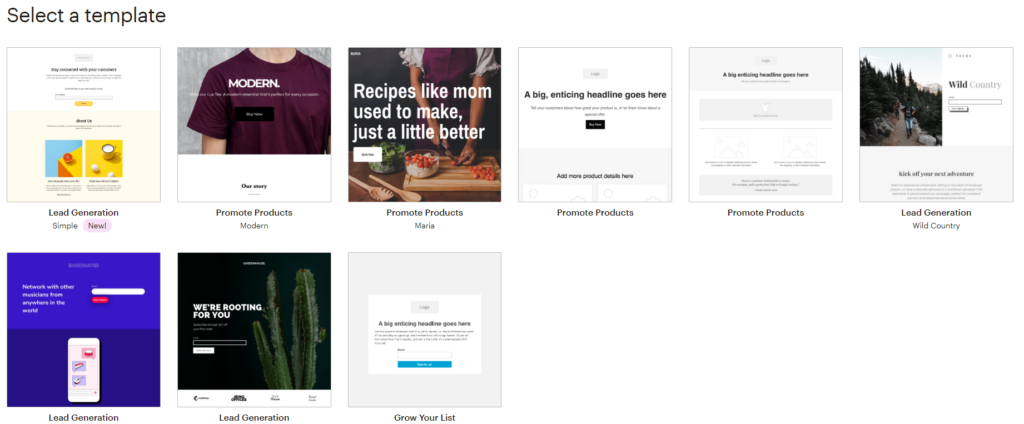
MailChimp has a drag-and-drop landing page builder. So many features are available for MailChimp Landing pages. They include Creating a buzz for your new business (Test Product, message, Ideas, etc. before launching), Highlight products (You can insert products directly from your eCommerce store), Offer Free downloads, etc. Creating Landing pages is easy. You have to follow some steps.
Click Create icon -> Click on Landing Pages -> Name your Landing page -> Select Audience -> Click Begin. Thats all.
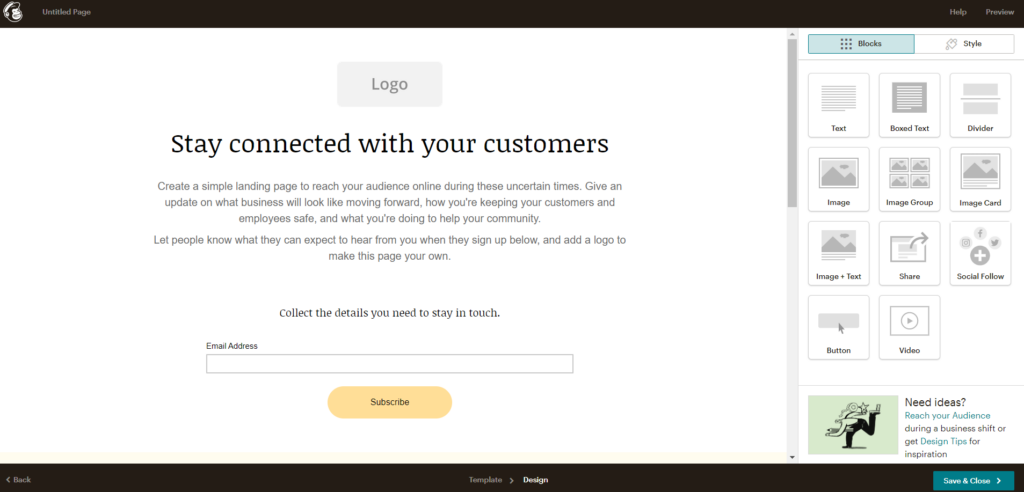
You can also create stunning websites using MailChimp and publish them. You can create unlimited pages with unlimited bandwidth in all plans. And MailChimp provides SEO tools, a free SSL certificate, and site visit analytics in every plan.
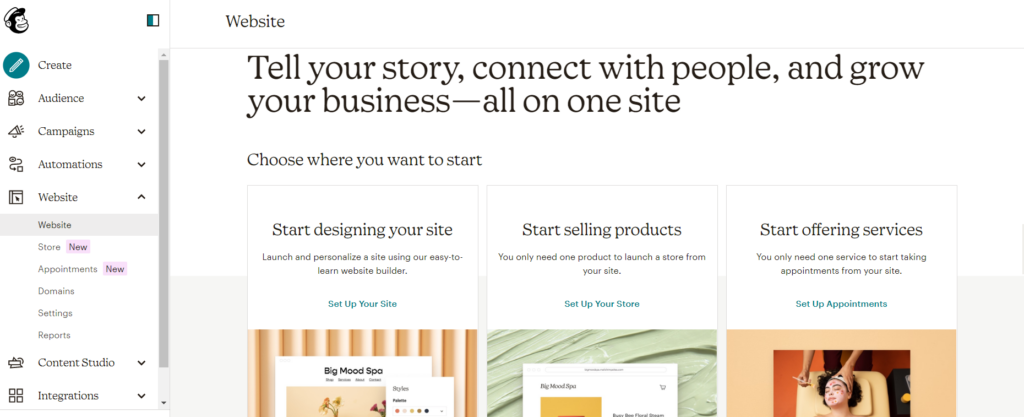
>> GetResponse
GetResponse has 190+ templates for the landing page. All are stunning in their look and feel. The landing page templates are categorized into Sign-up and registration, Promotion, Sales, Welcome, About me, Thankyou pages, Holiday pages, etc.
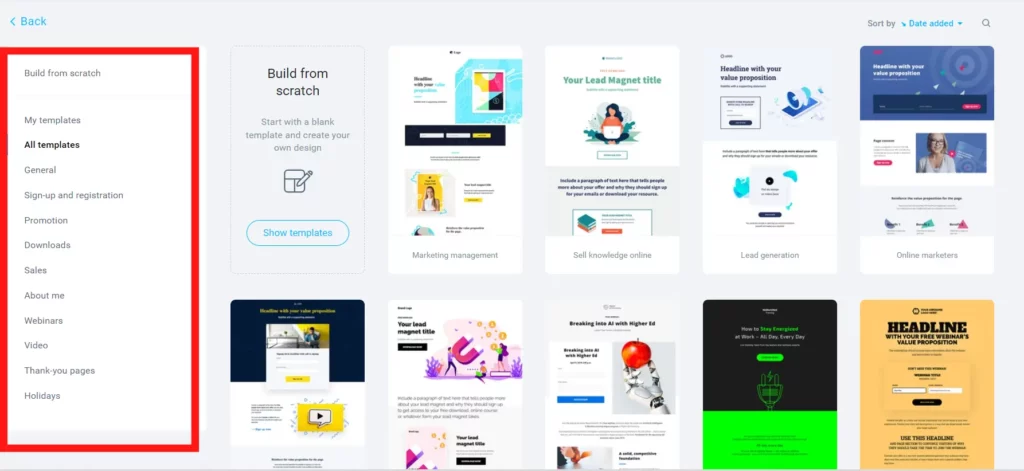
It has a drag-and-drop landing page builder, where you can add products, images, buttons, Countdown, videos, etc. All you have to do is just drag and drop the elements that you want.
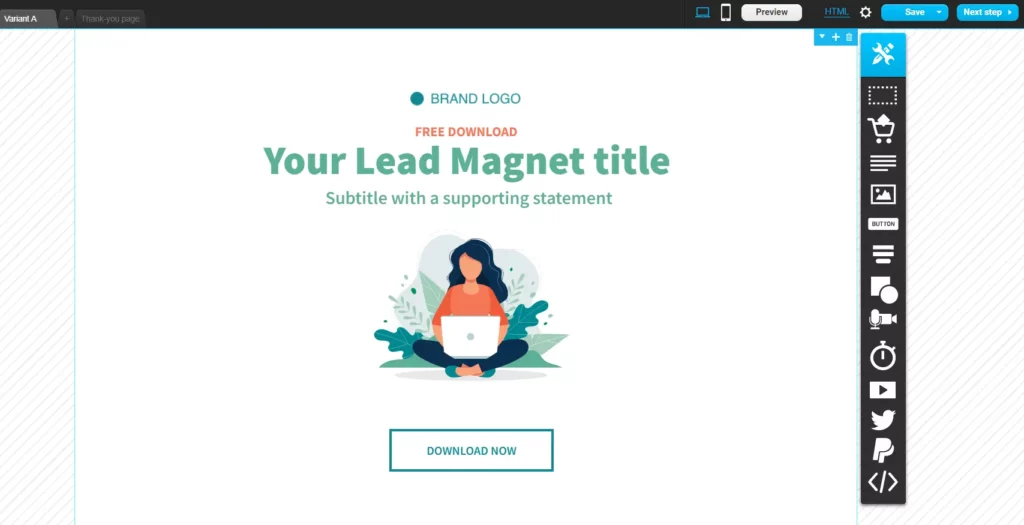
GetResponse has a good website builder. There are two types of website builders. One is a drag-and-drop editor where you can customize your website, and the other is an AI editor where you have to answer some questions and they will create a website for you.
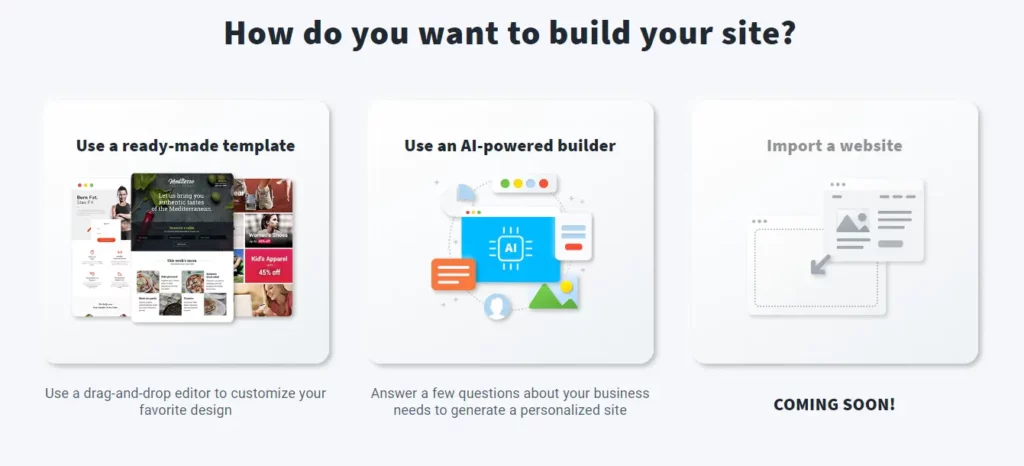
Key Take-Aways: Landing page creation and website building is better in GetResponse when compared to MailChimp. There are so many landing page templates available in GetResponse. Around 190+templates are there. But in MailChimp, there are around 10 templates are available. And also, website building is advanced in GetResponse compared to MailChimp.
Winner of Landing page & Website builder: GetResponse
MailChimp: 3-5 : GetResponse
8. Pricing Comparison
Both MailChimp and GetResponse have a free version. What are the things included in the free version? Let’s see.
| Features | MailChimp | GetResponse |
|---|---|---|
| Monthly email sends | 10,000 | Unlimited |
| Drag & Drop Editor | ✔️ | ✔️ |
| Templates | Basic | Pre-built |
| Newsletters | ✔️ | ✔️ |
| Click Tracking | ✔️ | ✔️ |
| SPAM Check | ❌ | ✔️ |
| Import contacts | ✔️ | ✔️ |
| Segmentation | Basic | Basic |
| Website Builder | ✔️ | ✔️ |
| Bandwidth | Unlimited | 5 GB |
| Signup forms | ✔️ | ✔️ |
| Landing Pages | ✔️ | ✔️ |
| Automation | ❌ | ✔️ |
| Popups | ✔️ | ❌ |
| Reports | ✔️ | ✔️ |
| Behavioral targeting | ✔️ | ✔️ |
| Personalized Product recommendation | ✔️ | ❌ |
| Integrations | ✔️ | ❌ |
| Number of users | 1 | 1 |
>> MailChimp
MailChimp has mainly 3 plans. The pricing plan (12 months) of MailChimp based on 1000 contacts is given below.
Essential: $23 /month: Email and landing page template, Customer journey builder, custom branding, A/B testing, 24/7 email, and also chat support.
Standard: $59 /month: Customer journey builder and Branching points, Send time optimization, Behavioral targeting, Custom templates, and also dynamic content.
Premium: $299 /month: This plan is for expert builders. Advanced segmentation, Multivariate testing, comparative reporting, Unlimited seats & role-based access, and phone support.

>> GetResponse
GetResponse has mainly 4 plans. It has also a free version with basic features. The pricing plan (12 months) of GetResponse based on 1000 contacts is given below.
Free: $0 /mo => For 500 contacts, Unlimited Emails, Newsletter, Visual email editor, Click tracking, Custom HTML, Promo codes, manual creator, Spam check, 1 Landing page, etc.
Email Marketing Plan: $15.58 /mo => For 1000 contacts, Inbox preview, A/B Testing, RSS to email, Google Analytics Tracking, Scheduling, Birthday emails, Welcome emails, Autoresponders series, 24/7 Chat support, Add tagging, etc.
Marketing Automation Plan: $48.38 /mo => Perfect Timing, Time travel, Product Box, Build from scratch, Drip campaigns, Click & open followups, Contact tagging, Event-based automation, Dynamic segmentation, Split automation, etc.
Ecommerce Marketing Plan: $97.58 /mo => eCommerce tracking, Recommended Products, Abandoned cart trigger, Abandoned Cart trigger, Purchase automation, eCommerce tracking, Segmentation based on eCommerce, Abandoned order recovery, etc.

Key Take-Aways: GetResponse is affordable when compared to MailChimp. Both have a free plan. For 1000 contacts, GetResponse’s plan is like $15.58, $48.38, and $97.58. MailChimp’s plan goes like $23, $59, and $299.
Winner of Pricing: GetResponse
MailChimp: 3-6 : GetResponse
9. Integration
>> MailChimp
Nobody can beat MailChimp at integration. Mailchimp offers more than 300+ integrations. They are also integrated with major CRMs. Their integrations are categorized into Ecommerce, productivity, point of sale, etc. Mailchimp is integrated with Shopify, Zapier, WooCommerce, etc.
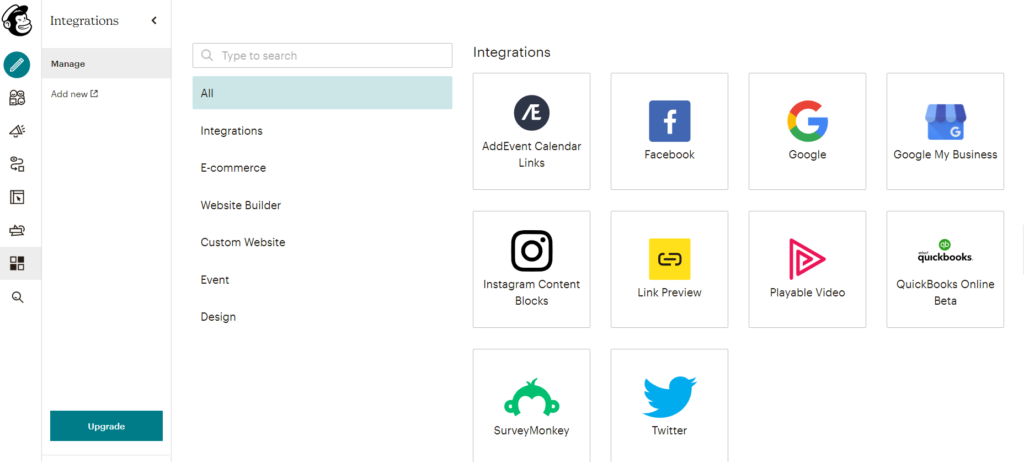
>> GetResponse
GetResponse has around 350+ integrations. You can integrate so many important apps like Amazon, BigCommerce, Etsy, Shopify, ClickBank, Facebook, Google Analytics, Paypal, etc. GetResponse also integrates with Zapier and using Zapier, you can connect up to 4000 apps.
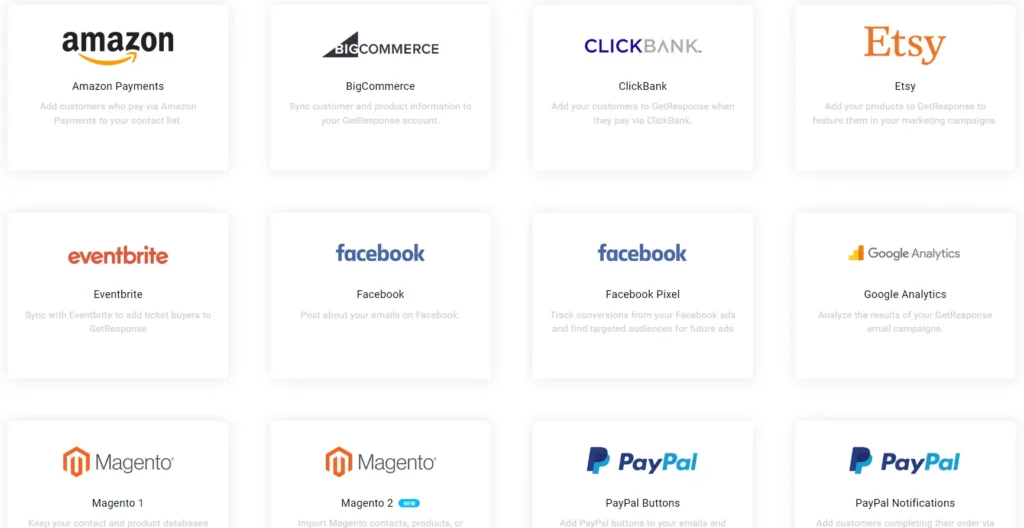
Key Take-Aways: GetResponse has more integration when compared to MailChimp. GetResponse has around 350+ integrations. MailChimp has 300+ integrations.
Winner of Integrations: GetResponse
MailChimp: 3-7 : GetResponse
10. Customer Support
>> MailChimp
Provides customer support via Live Chat, Email, and phone support. 24/7 email and chat support is provided for the $11 plan, phone support is provided for the $299 plan. You will not get proper customer support for the free plan.
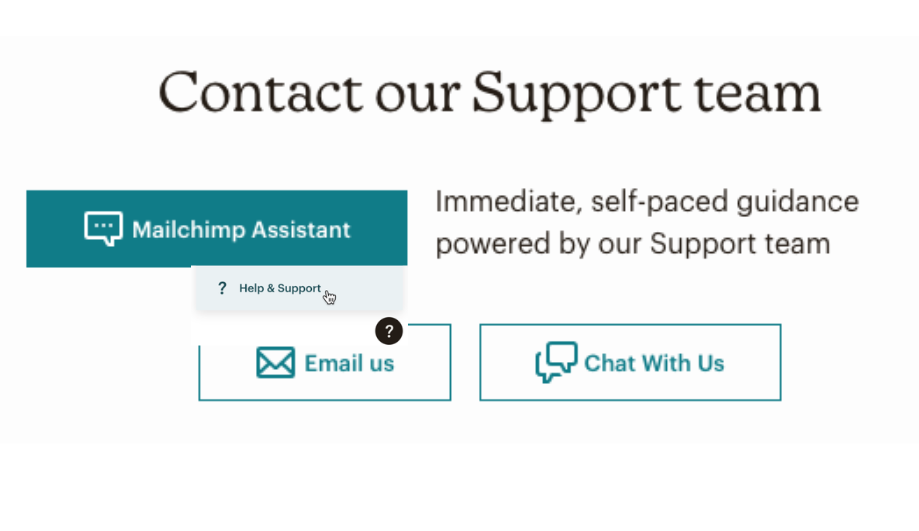
>> GetResponse
GetResponse has a good customer support team. Their support includes Email support and 24/7 Chat support. It has also phone support and Slack support. But they were included only in the Max Plan (Custom plan).
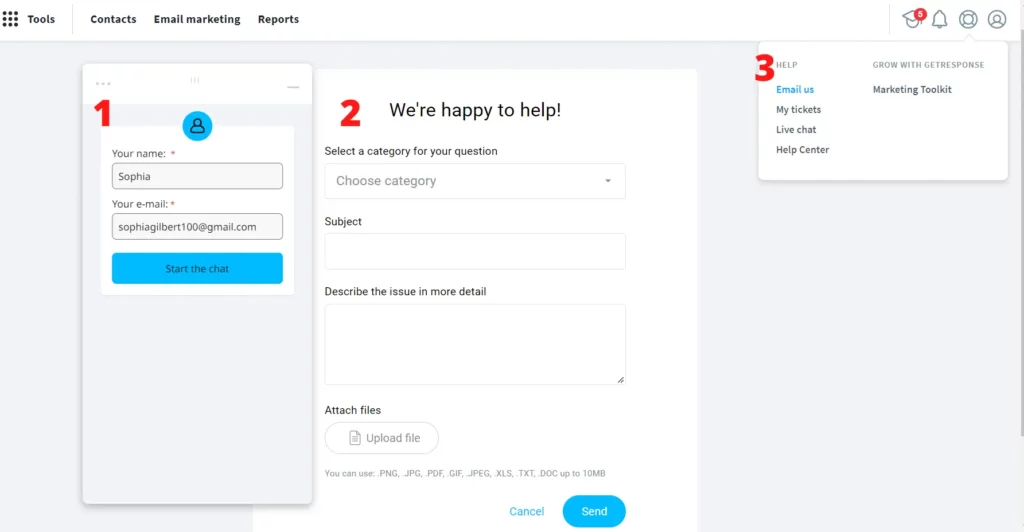
Key Take-Aways: Customer support is better in GetResponse when compared to MailChimp. MailChimp will provide proper customer support only for the highest plan($299). And both of them provide phone support on the highest plan.
Winner of Customer support: GetResponse
MailChimp: 3-8 : GetResponse
11. Live Chat System
>> MailChimp
MailChimp does not have an in-built Live Chat system. You have to integrate MailChimp with the LiveChat app.

>> GetResponse
Using GetResponse, customers can connect with you with a single click. GetResponse introduced a new feature called Live Chat, that which you can embed the live chat in your websites. Using GetResponse Live Chat, you can create a personalized experience for your customers or visitors, you can convert your page visitors into leads, and you will get more conversions. You can personalize the chat system the way you want. You can set up chat availability, and chat appearance, you can customize the visitor capture form, and you can set up pre-defined messages. When somebody enters into the visitor capture form, you can even add them to your list.
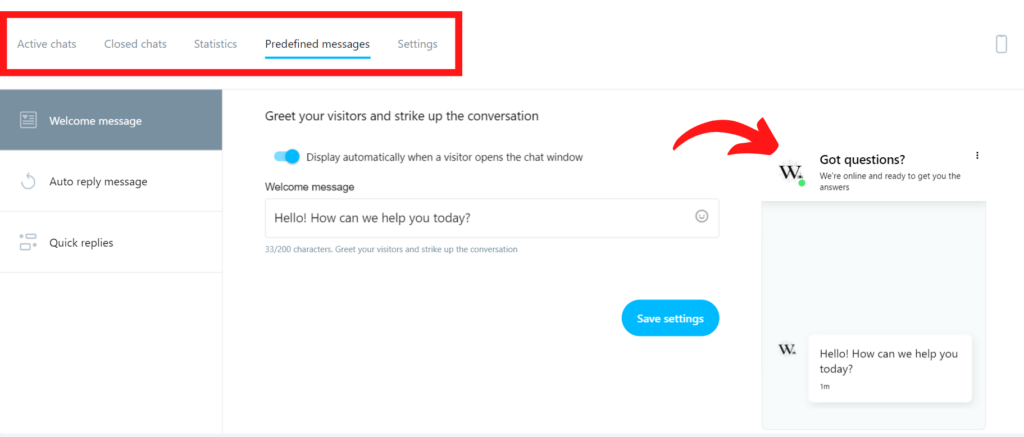
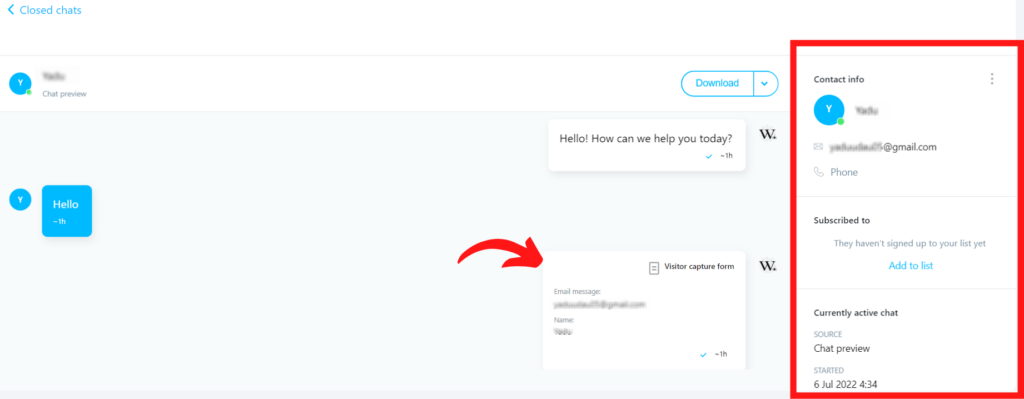
You will get the chat report also. You can see the total number of chats, Closed chats, Opened chats, Unanswered chats, Time duration of the chats, etc.

Key Take-Aways: GetResponse has live chat features, whereas MailChimp does not have that feature. You have to integrate with third-party apps for embedding live chat.
Winner of Live chat: GetResponse
MailChimp: 3-9 : GetResponse
12. Auto-Responder
>> MailChimp
MailChimp’s Automation and Autoresponder are the same. There is no separate feature like autoresponder in MailChimp. You can create an autoresponder message from the automation workflow.
>> GetResponse
It’s very easy to create an autoresponder in GetResponse, click on create a button on the top bar you will get a list of features, select create autoresponder you will land on this page. you can edit the name of Autoresponder, select your list for whom you want to send newsletters, select the interval of time when you want to send it, Fill in the subject line and preview text, design your message save and publish.

Autoresponder is key selling functionality that provides comprehensive features. you can Either send an autoresponder of time-based or action-based. A time-based Autoresponder can trigger at the day or exact time given by you. you can send the autoresponder day-wise. Action-based Autoresponders will get triggered when the user performs some actions like opening, closing, clicking, when he entered some part of a webpage, and many more.
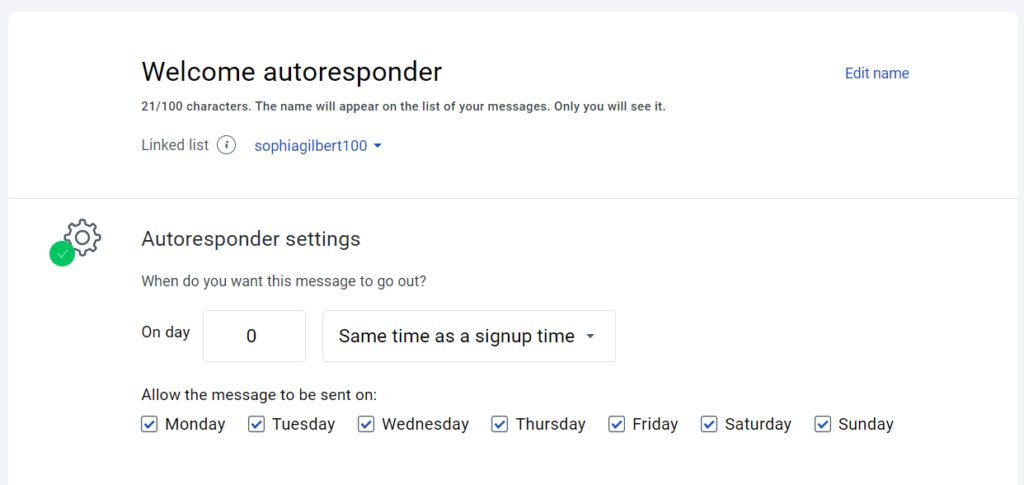
Key Take-Aways: GetResponse has a better auto-responder feature when compared to MailChimp. MailChimp auto-responder and automation are the same.
Winner of Autoresponder: GetResponse
MailChimp: 3-10 : GetResponse
Let’s see some other information about MailChimp & GetResponse.
| Found in | Started in 2001. Headquartered in Atlanta, US | Started in 1998. Headquartered in Gdansk, Poland. |
| Top Website | The top websites that use MailChimp are given below. >> Go.com >> Discogs >> Jopwell >> Unsplash >> Blic Online | The top websites that use GetResponse are given below. >> Gog >> Info share Academy >> AlexTerrier Music >> Unsplash >> Mobile Fun |
| Email Propagation | The Email propagation of website that using MailChimp is given below. In the cross mark (❌) area, the email will deliver slowly. 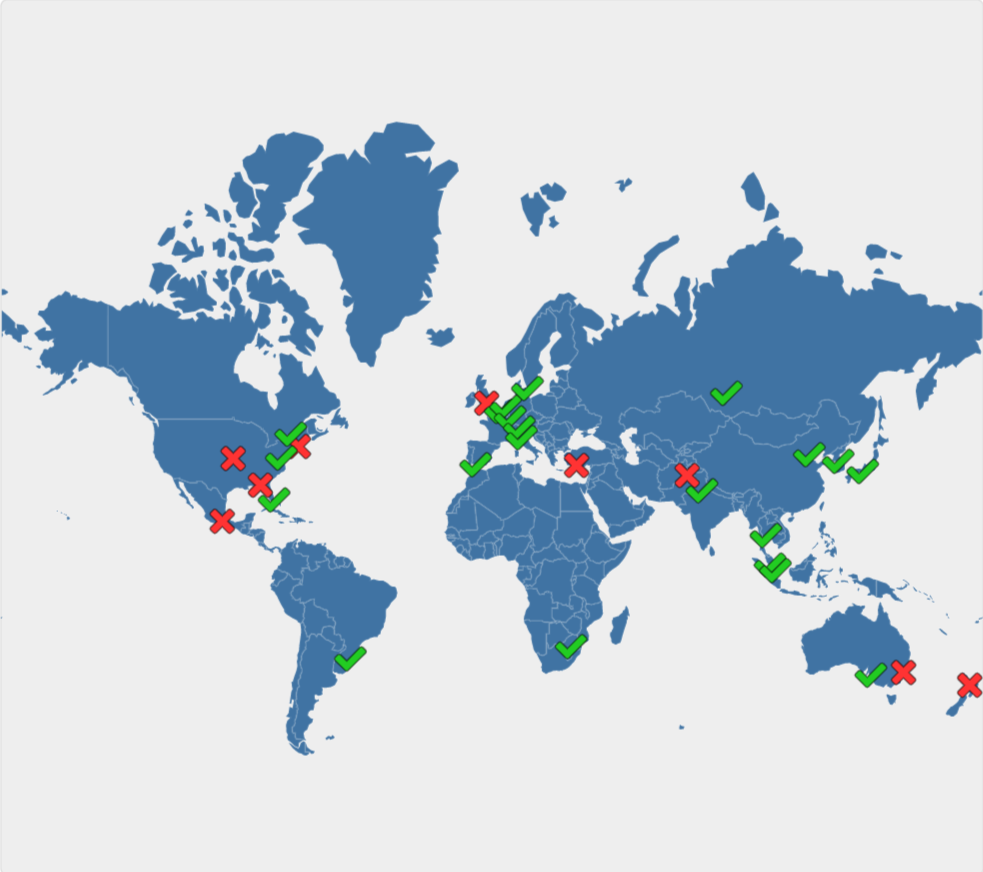 | The Email propagation of websites that use GetResponse is given below. In the cross mark (❌) area, the email will deliver slowly. 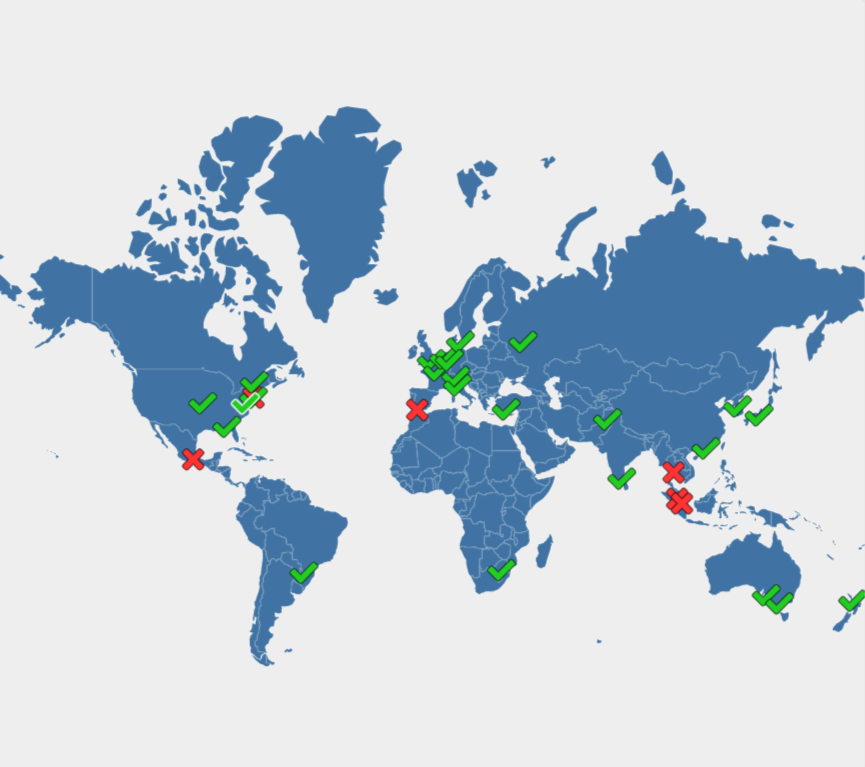 |
Alternatives of MailChimp Vs GetResponse
ConvertKit
Constant Contact
Campaign Monitor
ActiveCampaign
Salesforce Marketing Cloud
MailerLite
Moosend
Benchmark
SendInBlue
Emma
In-depth feature comparison of MailChimp and GetResponse is given below.
| Email Marketing Features | MailChimp ($23 /mo) | GetResponse ($15.58 /mo) | MailChimp ($59 /mo) | GetResponse ($48.38 /mo) |
|---|---|---|---|---|
| Users | 3 Users | 1 Users | 5 Users | 3 Users |
| Drag & Drop Editor | ✔️ | ✔️ | ✔️ | ✔️ |
| HTML Editor | ✔️ | ✔️ | ✔️ | ✔️ |
| Template Library | ✔️ 100+ Templates | ✔️ 160+ Templates | ✔️ | ✔️ |
| A/B Split Testing | ✔️ | ✔️ | ✔️ | ✔️ |
| Multivariate Testing | ❌ | ❌ | ❌ For $299 plan | ❌ |
| Split automation | ❌ | ❌ | ❌ | ✔️ |
| Apps & Integrations | ✔️ 300+ Integrations | ✔️ 350+ Integrations | ✔️ | ✔️ |
| Advanced Tracking & Reporting | ✔️ | ❌ | ✔️ | ❌ |
| Ecommerce marketing | ✔️ | ❌ GetResponse recently launched enhanced ecommerce marketing automation solution. | ✔️ | ❌ For $97.58 |
| Customizable pop-up forms | ✔️ | ✔️ | ✔️ | ✔️ |
| SMS marketing | ❌ (With Simple Texting Integration) | ❌ | ❌ (With Simple Texting Integration) | ❌ With custom pricing |
| SMS Service Follow-ups | ❌ | ❌ | ❌ | ❌ |
| In-depth reporting | ❌ | ✔️ | ❌ For $299 plan | ✔️ |
| Predictive analytics | ❌ | ❌ | ✔️ | ❌ |
| Built-in CRM | ✔️ | ❌ | ✔️ | ❌ |
| Create invoices | ✔️ | ✔️ | ✔️ | ✔️ |
| Lead Scoring | ❌ | ✔️ | ❌ | ✔️ |
| Contact Management | ||||
| Sign-up forms | ✔️ | ✔️ | ✔️ | ✔️ |
| Contacts list import from Gmail, Outlook, etc. | ❌ | ✔️ | ❌ | ✔️ |
| List segmentation | ✔️ | ✔️ | ✔️ Advanced segmentation for $299 | ✔️ |
| Ecommerce Segmentation | ✔️ | ❌ | ✔️ | ❌ For 97.58 |
| Automation | ||||
| Visual automation Workflow | ✔️ | ✔️ Limited Features | ✔️ | ✔️ |
| List Building tools & Welcome emails | ✔️ | ✔️ | ✔️ | ✔️ |
| Smart Sending | ✔️ | ❌ | ✔️ | ❌ |
| Dynamic content | ❌ | ❌ | ✔️ | ❌ |
| Automated Email Welcome series | ✔️ | ✔️ | ✔️ | ✔️ |
| Automated email behavioral series | ✔️ | ❌ | ✔️ | ✔️ |
| Landing Pages | ||||
| Custom Branded landing pages | ✔️ | ❌ | ✔️ | ❌ |
| Shoppable landing pages | ✔️ | ✔️ | ✔️ | ✔️ |
| Landing page creation & Hosting | ✔️ | ✔️ | ✔️ | ✔️ 190+ Templates |
| Logo Maker | ✔️ | ❌ | ✔️ | ❌ |
| Customer Support | ||||
| Phone Support | ❌ | ❌ | ❌ For $299 | ❌ For Custom plan |
| Email/Help Desk | ✔️ | ✔️ | ✔️ | ✔️ |
| 24/7 (Live Rep) | ✔️ | ✔️ | ✔️ | ✔️ |
| Chat | ✔️ | ✔️ | ✔️ | ✔️ |
| FAQs/Forum | ✔️ | ✔️ | ✔️ | ✔️ |
| Knowledge Base | ✔️ | ✔️ | ✔️ | ✔️ |
| Training | ||||
| Live Online | ✔️ | ✔️ | ✔️ | ✔️ |
| In-Person | ❌ | ❌ | ❌ | ❌ |
| Videos | ✔️ | ✔️ | ✔️ | ✔️ |
| Documentation | ✔️ | ✔️ | ✔️ | ✔️ |
| Webinars | ✔️ | ✔️ | ✔️ | ✔️ |
| Cloud, SaaS, Web-Based | ✔️ | ✔️ | ✔️ | ✔️ |
| Desktop – Mac | ✔️ | ❌ | ✔️ | ❌ |
| Desktop – Windows | ✔️ | ❌ | ✔️ | ❌ |
| Desktop – Linux | ❌ | ❌ | ❌ | ❌ |
| Desktop – Chromebook | ❌ | ❌ | ❌ | ❌ |
| On-Premise – Windows | ❌ | ❌ | ❌ | ❌ |
| On-Premise – Linux | ❌ | ❌ | ❌ | ❌ |
| Mobile – Android | ✔️ | ❌ | ✔️ | ❌ |
| Mobile – iPad | ✔️ | ❌ | ✔️ | ❌ |
| Mobile – iPhone | ✔️ | ❌ | ✔️ | ❌ |
| See all features | See all features |
Conclusion
Why should you use MailChimp over GetResponse?
Here is what is great about Mailchimp:
- You can send 10,000 emails per month (daily 2000 emails) to 2000 contacts in its free plan.
- In MailChimp, you will get Marketing CRM in all the plans. But in GetResponse does not have an in-built CRM. You have to integrate with third-party CRM tools.
- MailChimp has a built-in image editor. You can do all the basic editing in that. GetResponse does not have an in-built image editor.
- Analytics and reporting of MailChimp are better when compared to GetResponse. It has better features like geo-location tracking, Google analytics integration, etc.
- It is very easy to set up and easy to use.
- Campaign creation in MailChimp is easy when compared to GetResponse. And also, there are a lot of options are available in the email editor.
Why should you use GetResponse over MailChimp?
Here is what is great about GetResponse:
- GetResponse has the ability to host webinars. MailChimp does not have an in-built Webinar feature.
- GetResponse has a stunning collection of templates. There are around 160+ good-looking templates are available in GetResponse. In MailChimp, there are around 100 templates are available. But most of them are outdated and non-usable.
- Landing page creation is better in GetReponse when compared to MailChimp. It is very easy to create landing pages. GetResponse has around 200+ landing pages. But MailChimp has only 10+ landing page templates.
- GetResponse is affordable when compared to MailChimp. Its plan starts from $15.58 /mo for 1000 customers. MailChimp’s plan starts from $23 /mo for 1000 subscribers.
- GetResponse has better customer support when compared to MailChimp. MailChimp customer support is not that good.
- GetResponse has a high deliverability rate when compared to MailChimp.
Top News of MailChimp & GetResponse
- “Playful” Mailchimp redesign aims to unify the brand while encouraging creativity
- Intuit’s $12B Mailchimp Purchase Breathes New Life Into Email Marketing
- Want to Prove Patience Pays Off? Ask the Founders of This 17-Year-Old, $525 Million Email Empire
- GetResponse Announces Conversion into Joint-Stock Company
- GetResponse Launches Enhanced Ecommerce Marketing Automation Solution
Top Commercials
MailChimp
GetResponse

Sophia Gilbert is an Email Marketing Specialist and Web Application Expert with 10+ years of experience. She meticulously tested and used most of the email marketing tools & website builders in the real field. Here she is sharing reviews and comparisons of different email marketing tools based on her past experience through different companies where she has worked.

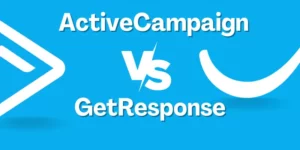

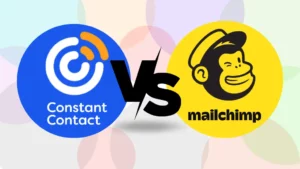
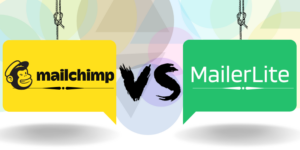




I didn’t have any expectations concerning that title, but the more I was astonished. The author did a great job. I spent a few minutes reading and checking the facts. Everything is very clear and understandable. I like posts that fill in your knowledge gaps. This one is of the sort.
Exploring how different tools stack up—like in this article comparing Mailchimp and GetResponse—really highlights the importance of reliable business systems. I’m genuinely impressed with Affordable Waste Management’s commercial waste services in Leeds. Their professional and eco-friendly approach makes operations smoother and more efficient, helping businesses stay focused on growth while maintaining sustainability.